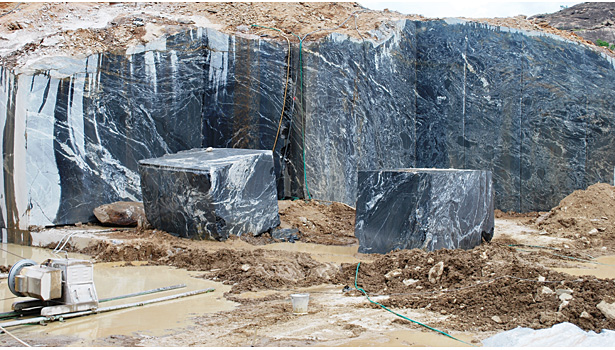Unlocking Natural Treasures: Granite Quarries in South Africa Revealed
Unlocking Natural Treasures: Granite Quarries in South Africa Revealed
Blog Article
Uncovering the Rich Background and Lasting Practices of Granite Quarrying
As we depend on the precipice of discovering the elaborate tapestry of granite quarrying, a trip through time exposes not simply the physical act of drawing out rock but likewise the social and historical value woven into the really fabric of this method. From the old origins that laid the foundation for modern-day quarrying techniques to the sustainable methods that are forming the future of this industry, each sculpt mark on granite surface areas narrates waiting to be discovered (granite quarries in south africa). The heritage of granite quarrying stretches much past mere extraction; it is a testimony to human ingenuity, strength, and the long-lasting allure of this majestic stone
Old Beginnings of Granite Quarrying
Dating back to ancient human beings, the practice of quarrying granite has been an indispensable part of human history and building advancement. The earliest evidence of granite quarrying dates back to ancient Egypt, where huge pyramids and detailed sculptures were crafted from this durable stone. The Egyptians utilized primitive tools to extract granite blocks from quarries, showcasing the relevance of this material in their monumental buildings.
Progressing in background, the Greeks additionally made significant contributions to the quarrying of granite. The Greeks used granite in different building wonders, such as holy places and sculptures, demonstrating their skill in shaping and carving this hardy stone. The Romans even more refined the strategies of quarrying granite, utilizing advanced devices like chisels and hammers to remove and shape granite for their iconic frameworks.
Via the centuries, the technique of quarrying granite has evolved, with contemporary technologies improving effectiveness while maintaining the timeless allure of this all-natural rock - granite quarries in south africa. From old worlds to contemporary home builders, the tradition of granite quarrying continues to form our globe
Evolution of Quarrying Techniques
The advancement of quarrying techniques has been noted by a continuous progression towards higher efficiency and accuracy in drawing out granite. Early quarrying techniques involved hand-operated labor with basic devices such as blades, hammers, and wedges to draw out granite blocks from the planet.
Advancements in computer-controlled tools and 3D modeling have actually optimized quarrying operations, leading to very little environmental effect and enhanced sustainability methods. As the demand for granite continues to rise, the development of quarrying strategies continues to be essential to meeting industry needs efficiently and sustainably.
Cultural Relevance of Granite
Granite holds a profound social relevance across various human beings because of its enduring visibility in architectural work of arts and prized monoliths. From the marvelous pyramids of Egypt to the elaborate carvings of the Angkor Wat holy place in Cambodia, granite has actually been a product of selection for revealing grandeur and longevity in reference social heritage. In old Rome, granite columns decorated temples and public buildings, signifying strength and durability. The social relevance of granite extends past its physical features; it symbolizes durability, stability, and eternity, making it an icon of sustaining traditions and traditions.

Sustainable Practices in Quarrying
In the middle of the rich background of granite quarrying and its cultural relevance lies a growing focus on sustainable practices within the sector. As ecological recognition and problems regarding resource deficiency have actually increased around the world, the quarrying field has actually increasingly welcomed lasting methods to lessen its effect on the environment and bordering neighborhoods.

Furthermore, improvement and rehab of quarry websites post-extraction are integral to lasting practices. By restoring quarried areas to a natural or helpful state, such as creating wildlife habitats or recreational spaces, quarriers can balance out the environmental footprint of their procedures and contribute favorably to the neighborhood ecosystem.
Legacy of Granite Quarrying
With a historical backdrop soaked in workmanship and commercial progression, what sustaining influence has granite quarrying left on the landscape of modern-day culture? The heritage of granite quarrying goes beyond plain removal methods; it has shaped building wonders, metropolitan landscapes, and cultural heritage worldwide. The durable nature of granite has made it a preferred selection for monuments, buildings, and infrastructure, standing as a testimony to the ability and creativity of quarry workers across generations.
In addition, the economic impact of granite quarrying can not be overlooked. The market proceeds to provide employment possibilities and drive local economic climates in areas where granite removal is prevalent. It has additionally stimulated technical advancements in quarrying techniques and equipment, resulting in much more effective and sustainable techniques.
In regards to sustainability, the legacy of granite quarrying consists of initiatives to minimize ecological effects with improvement jobs and accountable source monitoring. By balancing economic passions with environmental stewardship, the industry makes every effort to make sure that future generations can remain to gain from this long-lasting all-natural source.
Conclusion

Report this page